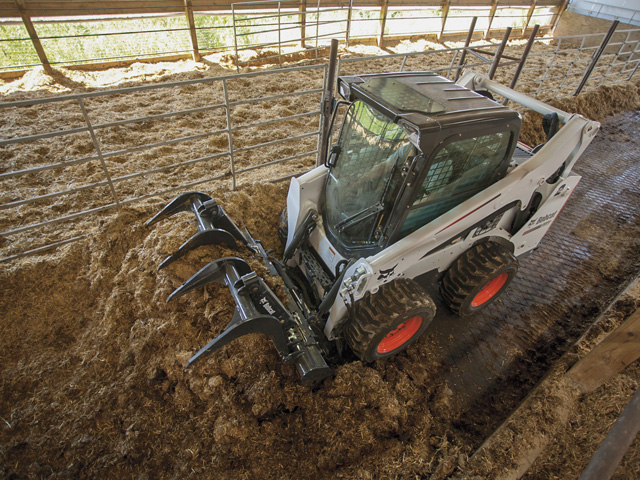Stay Safe Around Manure
Five Safety Tips When Working With Manure
OMAHA (DTN) -- With harvest rolling along, farmers will start to apply manure to fields in some locations. Every producer should understand fully how to store and apply manure safely.
Dr. Amy Schmidt, associate professor at University of Nebraska-Lincoln (UNL) Extension animal manure management, offered five tips on how to stay safe during manure application this season.
They are:
1. Fence manure storage facilities to prevent accidental entry.
Schmidt said producers can protect themselves and their workers and avoid accidents by putting in something as simple as a guard rail around manure storage facilities that are close to buildings. This would be true for either people on foot or trucks/tractors from driving into these structures. Also put a fence around manure lagoons to keep people and animals away from the manure. Use signs to warn of the possible dangers.
2. Recognize and address hydrogen sulfide gas.
This is mainly an issue in confined spaces, as the gas will overtake the person, and in some cases, the people who try to rescue the first person. There have been many incidents where multiple people die when a person goes in after someone else who was overcome with the deadly gas, she said. The toxic gas can also build up in spreading equipment and kill operators. There have been cases where tractor and manure spreader operators have been killed as they check the equipment.
P[L1] D[0x0] M[300x250] OOP[F] ADUNIT[] T[]
"It doesn't take much manure in an area to produce enough hydrogen sulfide to be dangerous," Schmidt warned.
3. Heed equipment warning signs and do not disable safety features.
Those who work around manure need to know manure's dangers. Warning signs can help educate everyone on what to watch for; while signs will not make people obey safety rules, they can serve as a constant reminder to remain safe. Power takeoff (PTO) safety is vital when spreading manure; shields and other protective equipment on the implements should be in place.
4. Recognize and address risks from methane in standing manure.
Stored manure can be flammable. The decomposition of organic carbon in manure creates methane gas in the form of a bubble or foam. Because it is flammable, it can asphyxiate at or above a certain concentration. Schmidt said that, usually, this is not an issue in dairy manure storage, but would be an issue in hog production with pit manure storage. Producers need to regularly inspect manure for foaming. If foaming is occurring, agitation of the pit can help break down the foam, but do this with much caution.
"Avoid creating sparks or electrical charges until the foam is controlled," she said.
5. Train everyone. Encourage safety over speed. Provide personal protection equipment (PPE). Stop and Think!
All workers should know the safety practices of working around manure storage and manure application.
It's also important that everyone should know the correct address of the farm, so if there is an emergency, first responders will be able to get to the farm.
In addition, workers should be trained to be safe and not sacrifice safety to get the job done quickly. Schmidt said PPE should be given to those working around manure. Those workers should have access to self-contained breathing apparatus and hydrogen sulfide monitors. Another PPE to have is a safety harness. This protects the person who would have to enter a manure storage structure, but also those who are working near it. This allows the other workers to get the first worker out without having to go into the structure themselves.
Other safety practices include having proper ventilation in these facilities.
"Know the signs of manure gas exposure," Schmidt stressed. "A loss of motor skills means you have to get out of the area right away."
Russ Quinn can be reached at russ.quinn@dtn.com
Follow him on Twitter @RussQuinnDTN
(c) Copyright 2021 DTN, LLC. All rights reserved.






